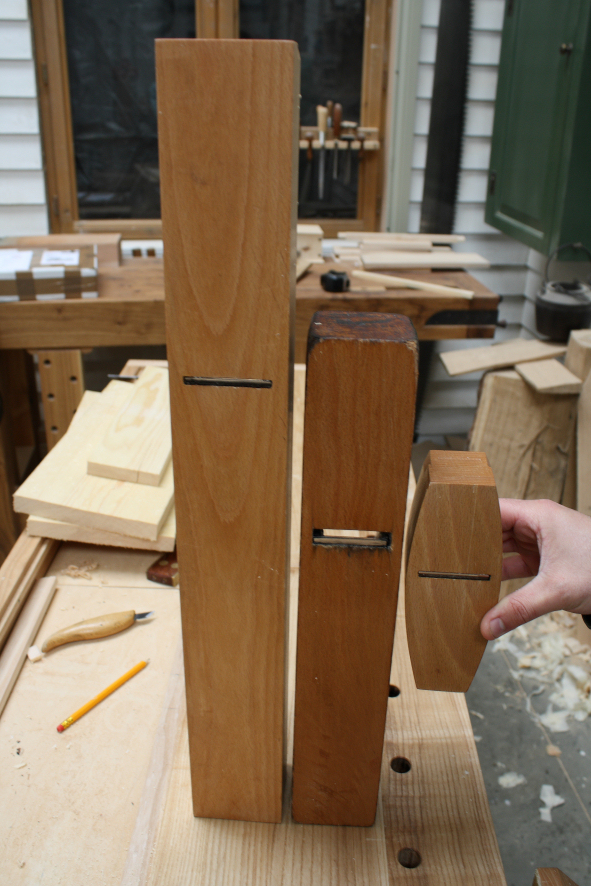
Originally Posted by
Stewie Simpson

Patrick; you need to use them to fully understand the difference in surface quality. It doesn't show clearly within the link attached photo, but I can guarantee you all 3 of those English style wooden soled planes would show signs of being burnished from the timber they were being worked on. Do you honestly believe that the burnishing is being restricted to the soles of the planes. Your comments about burnishing being restricted to the 3 point contact of a Japanese plane lacks depth of understanding.
Umm, what? Yes, the burnishing is restricted to the sole of the plane. The sole is burnished from being rubbed hundreds or thousands of times against wood. Whereas on the piece being planed, the blade is exposing freshly cut surface on every pass. Only rear half of the plane is rubbing against the piece being planed, exactly once; then that surface is removed on the next cut. Or not, if it's the last cut. It's not enough to cause burnishing. You might want to think it through before condemning people for lacking "depth of understanding."
"For me, chairs and chairmaking are a means to an end. My real goal is to spend my days in a quiet, dustless shop doing hand work on an object that is beautiful, useful and fun to make." --Peter Galbert







 Reply With Quote
Reply With Quote )
)


